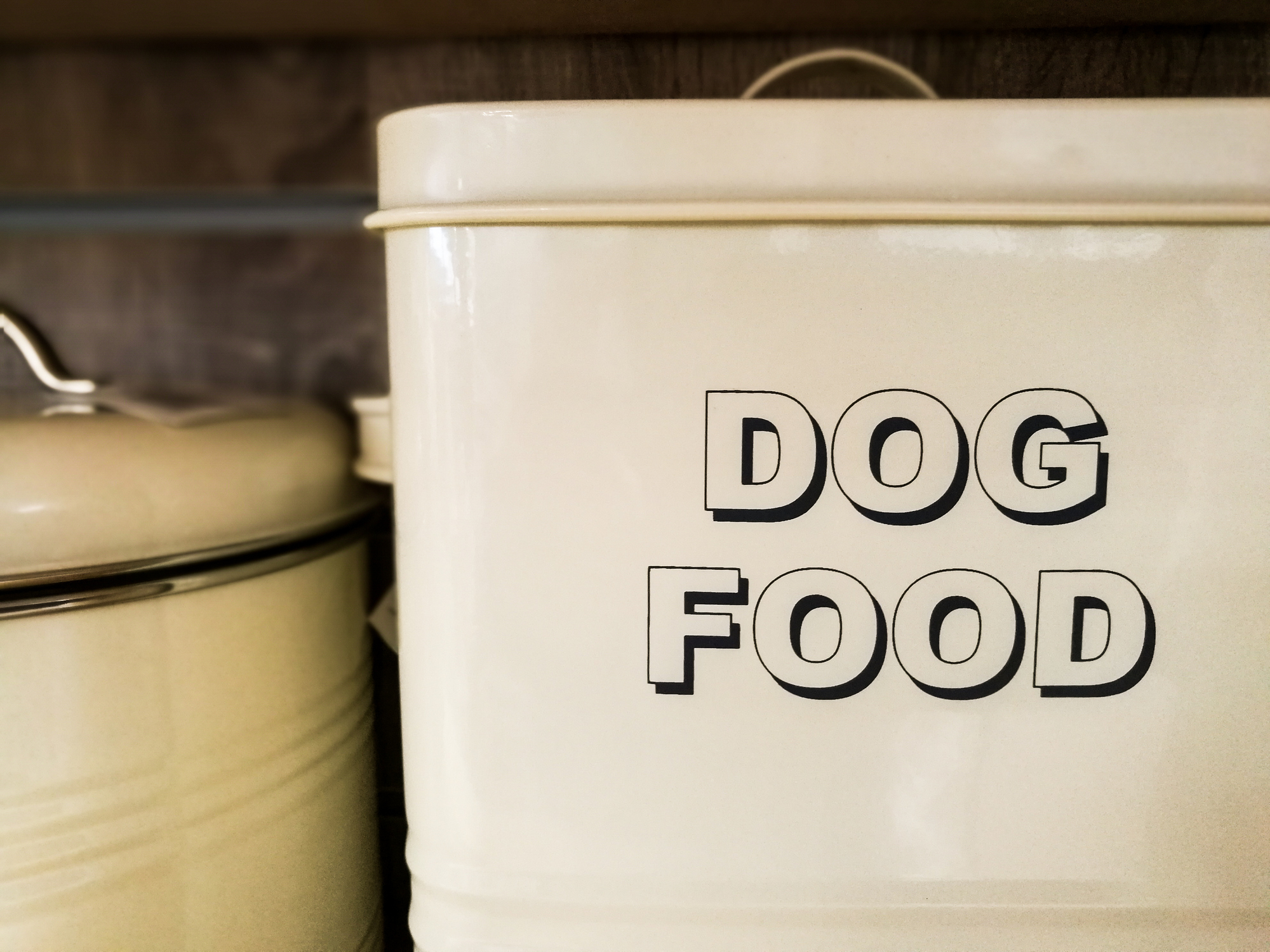
10 Tips for Pet Food Storage Safety
If you have a cat or dog, you probably have cans or bags of pet food laying around the house. But have you put much thought into how you store that food? Many pet owners don’t, and it could be dangerous for your pets.
There are many safe and unsafe ways to store pet food. To ensure that your pet doesn’t get sick or get into their food early and to make sure the food stays fresh as long as it is designed to, follow these simple pet food storage tips.
General tips
Whether your pet eats dry kibble or wet food, here are a few important things to know to safely store their meals.
- Buy and store the right amount of food: Nobody likes wasting money! Because both dry and wet food can go bad if it’s left sitting on the shelf too long, refrain from stocking up on food well in advance and only buy the amount you need for approximately one to three months’ worth of meals. This helps to ensure the food’s shelf life and that you’re feeding your pet the appropriate amount.
- Toss expired food: Most pet food will have a “best before” date on the packaging that indicates the date the food will remain the freshest until. Always check the product packaging at the store and later if the food has been in your home for a while and get rid of any food that is past this date. Also, remember that improper storage can reduce the shelf life, making the “best before” date even sooner.
- Wash storage containers between batches: Whether your pet’s food is wet or dry, always wash out the plastic, glass or stainless-steel storage containers you’ve kept it in before loading them up with the next batch. This helps minimize bacterial transmission and prevents rancid oils from contaminating fresh food.
Dry food
Many pet owners forget that although dry kibble is generally easier to store and manage, it is still perishable. Proper storage of dry food is crucial for your pet’s health and safety. Here are a few tips.
- Keep food away from air exposure: All dry food should be stored in an airtight container, whether that’s a storage container or the product’s original sealable packaging. Reducing the food’s air exposure minimizes humidity, which can degrade the food much faster, and prevents mold and airborne bacteria from contaminating it. It also ensures that critters and pests can’t access it, nor can your pets.
- Keep the original packaging: Many products’ original packaging is designed to keep food as fresh as possible for its shelf life, so keeping this packaging is ideal for storage. However, even if you move your pet’s kibble over to a larger container, keep the original packaging so you have access to the expiration date and batch number in case of a pet food recall.
- Store food away from direct sunlight: Pet food should be stored in a cool, dry and dark place away from direct sunlight. Too much sun can raise the temperature of the food and the humidity inside the container, making the food degrade faster.
- Store food where your pet can’t access it: If your pet food is stored on the floor or another location your pet can easily access it, they have a greater chance of getting into it and helping themselves to a midday snack. Always keep pet food out of reach of your furry friends, such as in a closet or on a higher shelf.

Wet food
Wet pet food has much more stringent storage requirements than dry food does because of its capacity to go bad much sooner. Use these tips to ensure your pet’s food stays safe to eat.
- Store cans safely in a cool, dry place: Be careful with your pet’s canned food to avoid denting or breaking the seal on the cans. All canned food should be stored in a cool, dry place before opening. If the cans are dented or swollen, they might be compromised with bacterial growth and should be disposed of.
- Store unfinished food within 4 hours: Cats and dogs might not finish a full can or package of wet food after opening. If that’s the case, don’t let the food sit out—take it away as soon as possible and store it in the refrigerator for safety. If the food has sat out for longer than four hours, it should be thrown out. Food kept in the refrigerator can usually last for three to five days. Keep it in an airtight container for freshness.
- Freeze food: Freezing wet food can preserve its freshness if it will not be eaten within a few days after opening. Do not freeze wet food in cans—always transfer it to a freezer-safe container. Frozen food should be thawed and served within six to nine months for freshness.
Of course, pet food safety also transfers to the ways you serve it, as well. Make sure you’re keeping all pet food serving areas clean, including your hands and countertops, as well as your pet’s food bowls. By paying close attention to food storage and handling safety, you can help keep your pet healthy.


